NESTING BOXES AND SHELTERS
Biocontrol of pests with auxiliary fauna.
Nesting boxes and shelters for birds,
bats, hedgehogs and beneficial insects.
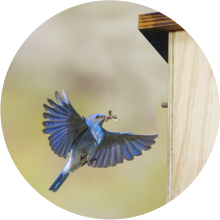
Biocontrol of pests with auxiliary fauna.
Nesting boxes and shelters for birds,
bats, hedgehogs and beneficial insects.

To control harmful insects, there are several biocontrol strategies that can be applied. One of them is to condition the habitat to favour biodiversity and the presence of natural allies. Birds, bats, hedgehogs and some insects are natural allies as they feed on harmful insects as part of their diet.
Benefits of auxiliary fauna:

BIOCONTROL OF PEST WITH BIRDS
Nest boxes are used in campaigns to protect different species of birds and bats, by promoting their populations through the installation of nest boxes suitable for each of them.
Nest boxes favour the increase of the population of these species and their stability and permanence in the natural environment, with the benefit that this represents in the fight against harmful insects. Likewise, the activity of predatory birds in agricultural areas reduces the presence of frugivorous birds that can be real pests in fruit fields.
The use of nesting boxes is widespread among conservation societies, environmental groups, universities, professional schools, government buildings, educational centres, summer camps, nature classrooms, youth associations and, in general, any interested individual.
NEST BOXES FOR BIRDS
ECONEX nest boxes are specially designed to be suspended and withstand the elements. They can be placed in recreational areas such as parks and gardens, as well as in cultivated areas to encourage the nesting of birds, which in turn will reduce the number of insects, including adults, larvae and pupae.
As well as being great insectivores, birds are also great at eliminating weed seeds.
For better monitoring and observation of the birds, ECONEX SOLID WOOD NESTING BOX WITH SIDE WINDOW has a window that allows these activities to be carried out without disturbing the birds. It is useful for monitoring the health and behaviour of the birds and facilitates maintenance tasks.
NEST BOXES FOR RAPTORS
ECONEX SOLID WOOD NESTING BOX FOR BIRDS RAPTORS is designed for common kestrels (Falco tinnunculus) and barn owls (Tyto alba) It is made from weather-resistant phenolic board.
The entire structure is reinforced with screws. The nest box can be opened for maintenance work.
ECONEX also has ECONEX SHELTER BOX FOR KESTREL BIRDS, specifically for the nesting of the common kestrel (Falco tinnunculus), and ECONEX SHELTER BOX FOR BARN OWLS, designed specifically for the barn owl (Tyto alba).
The use of nesting boxes for predatory birds increases the availability of breeding sites for two of the most common species of predator birds in urban and peri-urban environments.
They should be monitored at the end of the breeding season. When it comes to kestrels, this includes the moment eggs are laid. It is essential to make sure that the young have left the nest before carrying out the check.
In the case of the common kestrel, it generally takes place between the laying of the eggs at the beginning of May and the chicks leaving the nest in August.
Owls tend to bring forward the breeding season by a month, so the young usually develop between April and July.
INSTALLATION
Nest boxes can be placed in large trees, although they are more effective in buildings, whether or not they are inhabited. They should be installed at a minimum height of 6 metres in quiet areas with little traffic of vehicles or people. Shaded spaces without direct exposure to the sun are recommended.
BIOCONTROL OF PESTS WITH INSECTIVOROUS BIRDS
Insectivorous birds, whose role in the balance of the forest as regulators of the phenomenon of pests is well known, have been one of the most studied groups of entomophagous animals. Some of these birds, such as the great spotted woodpecker or woodpeckers, build their nests with their powerful beaks; the tits, chickadees, nuthatches, treecreepers, redstarts, flycatchers, etc., are troglodytes, put differently, they use the natural cavities that are produced in the trunks and thick branches of trees to nest and to protect themselves from adverse weather conditions or predators.
The importance of these birds is clearly reflected in the study of the stomachs of tits in which large quantities of Tortrix viridiana or Catocala sp. caterpillars, among others, and early stages of Thaumetopoea pityocampa (pine processionary caterpillar), very common in the insectivores studied in autumn and winter, were found. According to Goded et al. (2014), a pair of blue tits can bring around 3,800 insects to the nest during the average 18 days that the brood lasts. During the same period, a pair of great tits could bring 1,500 insects to the chicks. Romanyk and Cadahia (2002) extrapolated that the annual consumption of insects by a pair of great tits could be around 5 kg.

These results demonstrate the usefulness of these birds in maintaining the natural biological balance in the forest, which in itself justifies the placement of artificial nesting boxes in wooded areas. These nesting boxes successfully make up for the lack of natural cavities, thereby achieving a generalised increase in the populations of troglodytic insectivorous birds and their stability and permanence in the forest ecosystem, with the consequent benefit that this represents in the fight against harmful insects.
Therefore, the greater the presence of nesting pairs, the greater the consumption of insects that can potentially cause damage to agricultural or forestry plants.
NEST BOXES FOR INSECTIVOROUS BIRDS
ECONEX SOLID WOOD NESTING BOX FOR INSECTIVOROUS BIRDS Code: UIPFETA356 have an inner platform to facilitate access for the birds, providing additional protection for the brood.
NEST BOXES FOR INSERTIVOROUS BIRDS (ECO)
ECONEX ICONA NESTING BOX
The entrance hole of the ECONEX ICONA NESTING BOX is covered by a plastic plate that prevents damage from woodpeckers.
The nest boxes are made of moisture-resistant wood with a natural wood cover. The entrance openings are optimised for the entry of Paridae.
The nest boxes can be opened at the back for observation, study and occasional control and have a hook at the top for suspending them from branches.
ECONEX SHELTER BOX FOR THE WESTERN HOUSE MARTIN
A bird shelter, specifically for the common house martin. It is made of clay and has a solid wooden support so that it can be hung up and withstand the elements. It has a rounded shape and the entrance to the nest, located in the upper side of the clay structure, is optimised for the birds to enter.
The most suitable time for installing it is at the end of winter or the beginning of spring, as breeding birds return to Europe between April and May. The most suitable orientation is south-southeast, avoiding direct sunlight and sheltered from prevailing winds.
The bird shelter should be placed between 2 and 5 metres above the ground, but in the case of the common house martin, it prefers higher areas. It should preferably be placed on walls, façades facing large courtyards, squares or open spaces protected from prevailing winds by other structures or buildings, in a quiet place and out of the reach of cats and people.
According to the recommendations of the Spanish Ornithological Society (SEO), the nest box should be placed between 2 and 5 metres from the ground, in a tree or on a wall, out of the reach of cats and people.
There are no fixed rules regarding the most appropriate orientation for the entrance to the nest box, as it depends on each specific location. The most appropriate orientation is south-southeast, avoiding direct sunlight and sheltered from prevailing winds. Orientations most frequently exposed to prevailing winds, storms or any other adverse atmospheric conditions should be avoided.
Damage should be avoided if they are installed in trees, for which it is recommended to hang them from a branch using the hook, located at the top. If it is placed on a wall, it is better to place it among some climbing plants, anchoring it directly to the wall.
The most suitable time to install them is in late autumn, as this way they can be used by birds as shelter on winter days, and as they are already familiar with their presence in the trees, they will be readily accepted for nesting the following spring. Between October and November, when the nest has been abandoned, it is recommended to empty its contents and clean the inside with boiling water to remove any parasites that could infect the chicks the following spring. THE NESTS SHOULD NOT BE HANDLED WHILE THE CHICKS ARE BEING RAISED.

BIOCONTROL OF PESTS WITH BATS
Not all bats spend the day in caves. They often use tree hollows for shelter, as well as abandoned mines, buildings, bridges and many other places. In fact, the great variety of bats reflects the incredible diversity of species that exist. Bats are very opportunistic and have adapted to their environment in creative ways to take advantage of the multitude of shelters available to them. However, we humans frequent the areas where bats live, modifying or destroying their habitats.
Bat shelters provide a truly comfortable home for many species of bats. It is a way of providing valuable shelter for the only species of flying mammals, being in decline worldwide.
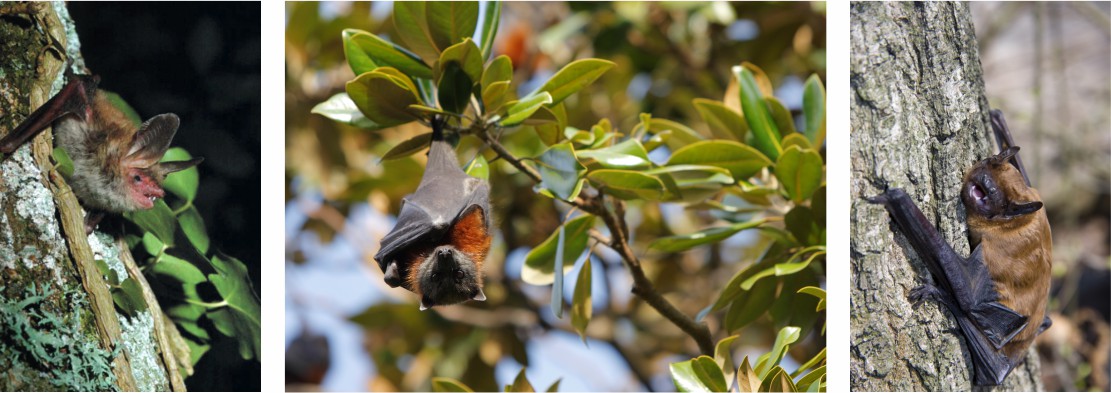
SHELTERS FOR BATS
TheECONEX SOLID WOOD SHELTER BOX FOR BATS, is made of highly resistant wood and is specially designed to be hung up, resist the elements and provide good insulation. The wood is untreated due to the bats' sensitivity to toxic products.
It can be placed in recreational areas, such as parks and gardens, as well as in cultivated plots to encourage bat nesting and shelters, which in turn will reduce the number of insect pests.
ECONEX SOLID WOOD SHELTER BOX FOR BAT COLONIES is designed to accommodate a large number of bats, often hundreds. For this reason, it is considerably larger than ECONEX SOLID WOOD SHELTER BOX FOR BATS.
For their placement it is recommended to use larger structures, such as abandoned buildings, natural caves or constructions specifically designed to accommodate large populations of bats.
Shelters for bat colonies provide a suitable environment for bats to gather, breed and spend the winter together.
According to a study carried out in the United States, a bat preys on around 1,200 mosquito-sized insects per hour. This fact allows us to consider these flying mammals as true controllers of nocturnal insect pests.
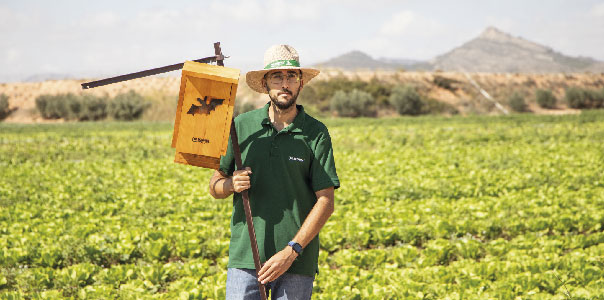
Bats build their nests in their natural cavities in the trunks and thick branches of trees, to nest and to protect themselves from the elements or from the predatory actions of their natural enemies.
The results of the usefulness of these birds in maintaining the natural biological balance in the forest is evident, which in itself justifies the placing of artificial refuges for bats in wooded areas.
These refuges successfully make up for the lack of natural cavities, thus achieving a generalised increase in bat populations and their stability and permanence in the forest ecosystem, with the consequent benefit that this represents in the fight against harmful insects.
The scarcity of suitable breeding sites in recently reforested mountains or in immature forests has a significant influence on the abundance and distribution of forest species of chiroptera.
This action involves the installation of specific shelters for chiroptera, with characteristics that allow the reproduction of these species inside.
Monitoring of the refuges is included in the monitoring of forest bat populations, as in addition to providing shelter, they provide data on the presence of these species in a given area.
The shelters are used in campaigns to protect insectivorous birds, by promoting their populations through the installation of nesting boxes.
The use of refuges is very widespread among conservation societies, environmental groups, universities, professional schools, town halls, educational centres, summer camps, nature classrooms, youth associations and in general any interested individual, as well as to be able to continue this work in the state-owned mountains administered by the Autonomous Organisation of National Parks or other government organisations.
There are no fixed rules regarding the most appropriate orientation of the entrance to the nest, as it depends on each specific location. The south or noon orientation is the most usual; orientations most frequently exposed to prevailing winds, storms or any other adverse atmospheric agent should be avoided.
In order to avoid them sliding down, it is advisable to install them between the secondary twigs of a branch or in a fork. The height at which they are placed does not seem to affect the occupation of the bats, although to avoid tampering by curious onlookers, in public places it is recommended to raise the installation of the shelter to at least 4-5 metres from the ground.
The best time to set them up is in late autumn, as this means they can be used by bats as shelter on winter days, and as they are already familiar with their presence in the trees, they will be readily accepted for nesting the following spring.
The orientation of the shelters will depend greatly on the area, the latitude, the average temperature, etc. Generally, it is recommended to install them in places with 5 to 7 hours of sunlight. Bearing in mind that the period of occupation of the boxes by the bats (May-September) corresponds to the hottest time of the year, it is not advisable to install the shelters facing south, unless the branches protect them from exposure to the sun. If this is the case, it is possible that the shelters could reach temperatures that are not optimal for colonisation.
PINE PROCESSIONARY CATERPILLAR BIOCONTROL WITH BATS
The biological cycle of bats perfectly overlaps with that of the pine processionary caterpillar. Adult butterflies begin to fly and reproduce between June and September, a period in which most species of chiroptera have finished raising their young.
It is at this time of year when there is a high level of insect predation due to: the greater abundance of bats, as the individuals born at the beginning of summer join the adult population; the high energy requirements of females and young, the former to recover from lactation and the latter to invest in their rapid growth to enable them to successfully survive the winter period.
The trophic resources ingested by bats depend on the type of habitat, the abundance of insect species, seasonal periods, etc. Studies of the diet of Nyctalus leisleri show that an important part of its diet is based on the ingestion of lepidoptera (13-46%) (Sullivan et al. 1993; Waters et al. 1999). These results are important for our objective. Nyctalus leisleri is a forest species whose presence has been verified on the Mediterranean coast.
The species' activity begins very early, before dusk, coinciding with the hours of activity of the pine processionary butterfly (Thaumetopoea pityocampa). The forest environment, the type of trophic resources ingested and the ethology of Nyctalus leisleri increase the likelihood of capturing processionary butterflies. In the case of Pipistrellus pipistrellus, moths do not constitute a high proportion of its diet, representing approximately between 1 and 5% of its diet (Hoare 1991; Sullivan et al. 1993).

It should be taken into account that the trophic studies of Pipistrellus pipistrellus have been carried out in northern latitudes where the abundance of lepidoptera is scarce, and there may be notable differences with respect to the feeding behaviour of Mediterranean populations. On the other hand, it must also be taken into account that Pipistrellus pipistrellus is an ubiquitous species and does not select its prey or its size, that is to say, it feeds on the insects the insects that are most abundant at each period of the year (Swift et al., 1985). This characteristic is very important as it has a regulating function on the demography of insect populations.
Most of the species detected in Spain prefer to hunt in wooded areas, wooded clearings and at the edges of forests. They may also frequent, to a lesser extent, crop fields and urbanised areas, where they can be seen capturing their prey around lights. Their hunting areas are not usually very far from the refuges they use, with the exception of Tadarida teniotis, which is capable of travelling very long distances and hunting at great heights (even 300 metres from the ground).
Most species of chiroptera can potentially occupy the refuges, even though some of them are not forest dwellers. Thus, for example, the fissure-dwelling and often anthropophilic species Pipistrellus pipistrellus and Pipistrellus kuhlii and the forest bats Hypsugo savii, Nyctalus leisleri and Nyctalus lasiopterus can settle in the shelters provided.
SOURCES: Luis Núñez Vázquez of the Forest Health Service of the Balearic Islands. Oscar de Paz and David Almenar - Spanish Society for the Conservation and Study of Bats (SECEMU). Department of Zoology and Physical Anthropology. University of Alcalá de Henares (Madrid) Egoitz Salsamendi, Joxerra Aihartza, Urtzi Goiti and Inazio Garin from the Department of Zoology and Cell Animal Dynamics, University of the Basque Country.
BIOCONTROL WITH INSECTS
The purpose of insect shelters is to help numerous species of insects and arachnids that prey on other insect pests to hibernate and, in some cases, breed in parks and private and public gardens.
ECONEX SHELTER BOX FOR INSECTS (Code: UIPFETA282), ECONEX MEDIUM-SIZED SHELTER BOX FOR INSECTS (Code: UIPFETA373) y ECONEX GIANT SHELTER FOR INSECTS (Code: UIPFETA325) are structures specifically designed to promote biodiversity in natural spaces. They thus contribute to the conservation of biodiversity, the pollination of crops and the natural management of pests in natural and urban environments.
The ECONEX shelter is designed to achieve all possible benefits for the ecosystem. It is divided into a large number of compartments to increase the diversity of species attracted and with natural materials to imitate the insect's habitat.
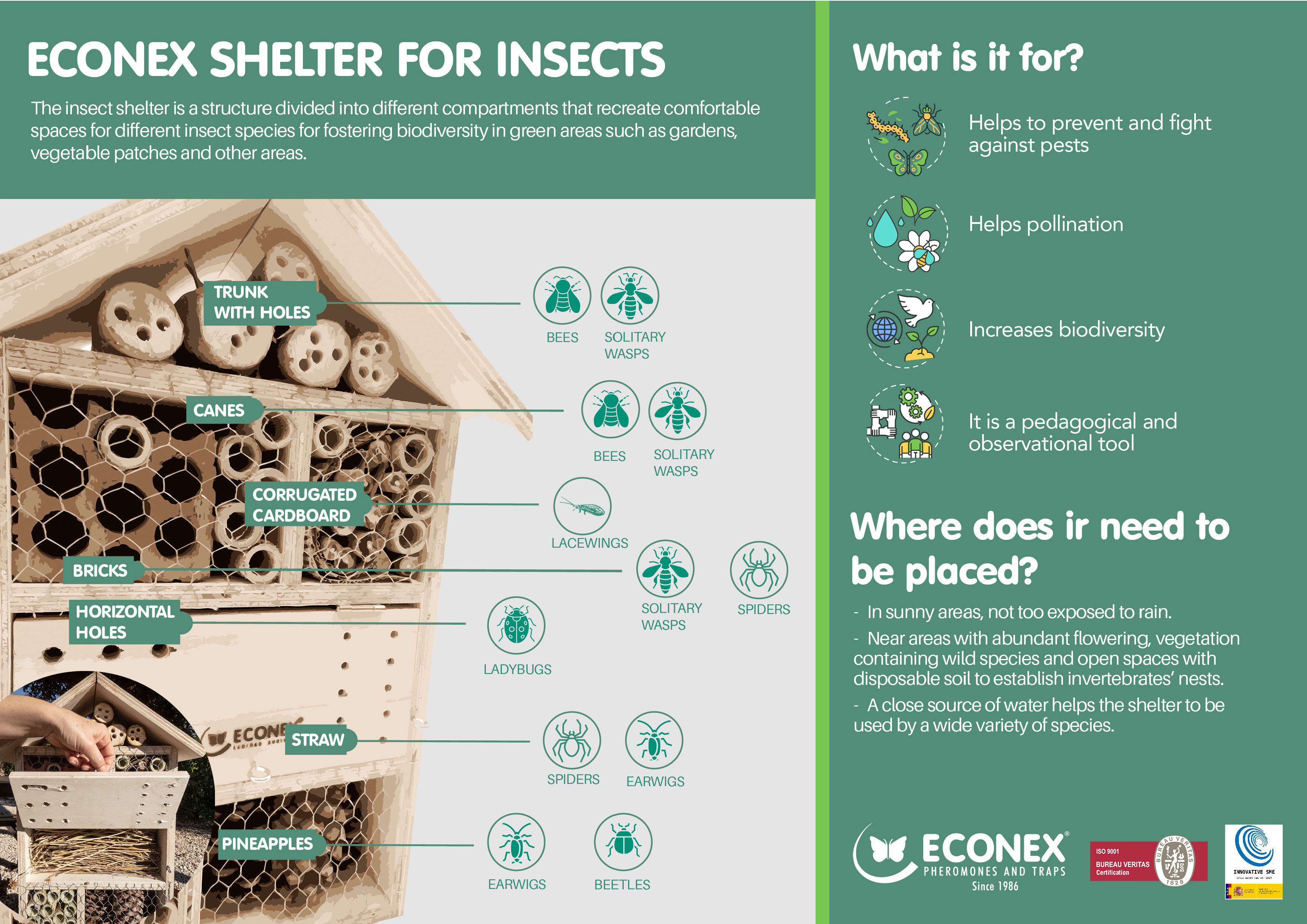
They provide hibernation and, in some cases, breeding shelters for many species of insects and arachnids that feed on other pests in parks and private and public gardens. The insects that make the most use of these refuges are important pollinators, such as bumblebees and solitary bees, parasitoids of other insects, such as ichneumonidae, sphecidae and pompilidae, as well as predators, as it is the case of lacewings, and detritivores, such as earwigs.
SHELTER FOR INSECTS
BIOCONTROL OF PESTS WITH ANIMALS
The use of refuges such as those for hedgehogs and lizards is a biocontrol strategy that encourages the presence of these animals in crops or agricultural areas, since they are natural predators of certain pests. These refuges serve as safe habitats for hedgehogs and lizards to shelter, feed and reproduce without the threat of predators or adverse conditions.
SHELTERS FOR HEDGEHOGS
The hedgehog shelter is made of 20 mm thick tongue and groove pinewood treated with weather-resistant varnish. The structure is reinforced at the inside corners. The roof, covered with a layer of bituminous roofing felt, is accessible and is fixed at the back with two hinges that allow it to be opened completely. It closes with a windbreak hook. The entrance opening is rectangular. Inside the shelter there is a rectangular piece that protects the hedgehogs and prevents foxes from attacking.
To avoid any contact with damp soil, the nesting box is elevated 3 cm off the ground by means of 3 planks nailed to the base.
INSTALLATION
The nesting box should be placed next to a wall or a tree, as hidden and sheltered as possible. The shelter should be positioned so that the entrance faces away from the usual wind in the area, to avoid draughts inside.
It is advisable to place the nesting box in a sunny spot so that the temperature during the cold season is as high as possible and hibernation is not so harsh. In the middle of summer, however, a less sunny and shady spot would be more advisable.
MAINTENANCE
It is vitally important not to disturb the animals if they are using the shelter, as during hibernation waking them up abruptly is dangerous and during the breeding season, it could lead to the rejection of the young.
It would be advisable to clean it at least once a year, emptying all the material they have introduced into the nest and disinfecting it.
SHELTERS FOR LIZARDS
The lizard shelter is a structure consisting of a habitable support made of weather-resistant phenolic board. Inside, it houses barks and dry branches that provide protected habitats for the lizards. The structure is reinforced with nails and is wrapped in metal mesh, which has subsequently been covered with cement and sand. Entrance holes have been made in the vertical walls of the structure.
The shelter does not require maintenance, unless the materials are obviously damaged.
INSTALLATION
The refuges should preferably be located in areas with heterogeneous native vegetation containing wild species of shrubs and plants, abundant flowering and spaces with varied substrates and different temperature gradients, capable of attracting invertebrate fauna in the different seasons of the year and providing shaded areas for the refuges. The availability of water in the vicinity will also favour the establishment of invertebrates, making it easier for the refuge to be used by lizards. Deep sources should be avoided and, if necessary, an element should be placed to allow the lizards to escape. Likewise, shelters should not be placed in areas close to cat colonies. Shelters should be located in areas that are not too exposed to rain.
To favour reproduction, it is essential to place the refuges in a place partially protected from direct sunlight.
ACCESSORIES FOR BIRDS
Accessories for birds, such as feeders, drinkers and others, provide a number of benefits for both the birds and their natural environment.
These devices provide sources of food and other basic resources, especially during times of scarcity, such as in winter or in arid areas. They can also attract a variety of species that enrich biodiversity and foster a balanced ecosystem.
ECONEX WOODEN BIRD FEEDER
This accessory is designed to provide food for birds in green areas such as gardens, parks or patios.
ECONEX WOODEN BIRD FEEDER has a natural appearance that blends in with any outdoor environment and is made of weather-resistant phenolic board.
These feeders benefit birds by providing a place for them to feed, contribute to the conservation of the area's biodiversity and encourage interaction with nature.
IN CROPPED AREAS:
Place between 3 and 20 nests per hectare, depending on the crop characteristics.
Place between 3 and 10 shelters for insects per hectare, depending on the crop characteristics.
IN FOREST AREAS:
Place between 3 and 25 nests per hectare, depending on the characteristics of the forest mass.
PARKS AND GARDENS:
Nests with a 5-to-10-meter separation need to be placed, depending on the park characteristics.
NOTE: Nests can take from a few weeks to more than a year to be colonized.
ECONEX SOLID WOOD NESTING BOX FOR BIRDS
Corrugated cardboard box with 24 units.
Box dimensions: 0,16 x 0,16 x 0,20 m (width x length x height).
Box weight: 21 kg.
Number of boxes per pallet: 20
Pallet dimensions: 0,80 x 1,20 x 2 m (width x length x height).
Pallet weight: 429 kg
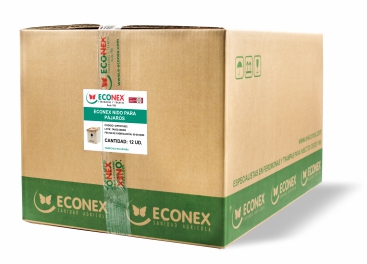
Box with 24 units.
ECONEX SOLID WOOD NESTING BOX WITH SIDE WINDOW
Corrugated cardboard box with 24 units.
Box dimensions: 0,40 x 0,60 x 0,35 m (width x length x height).
Box weight: 21 kg.
Number of boxes per pallet: 20
Pallet dimensions: 0,80 x 1,20 x 2 m (width x length x height).
Pallet weight: 429 kg
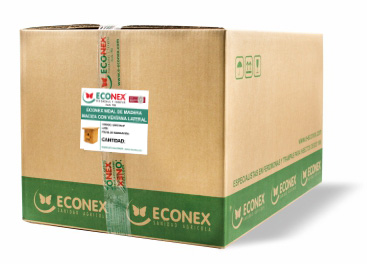
Box with 24 units.
ECONEX SOLID WOOD NESTING BOX FOR INSECTIVOROUS BIRDS
Corrugated cardboard box with 20 units.
Box dimensions: 0,60 x 0,80 x 0,48 m (width x length x height).
Box weight: 27,95 kg.
Number of boxes per pallet: 8
Pallet dimensions: 0,80 x 1,20 x 2,05 m (width x length x height).
Pallet weight: 234 kg.
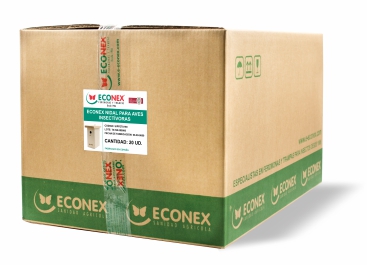
Box with 20 units.
ECONEX SOLID WOOD NESTING BOX FOR INSECTIVOROUS BIRDS (ECO)
Corrugated cardboard box with 20 units.
Box dimensions: 0,60 x 0,80 x 0,48 m (width x length x height).
Box weight: 22,70 kg.
Number of boxes per pallet: 8
Pallet dimensions: 0,80 x 1,20 x 2,05 m (width x length x height).
Pallet weight: 192 kg.
-caja-20 u.jpg)
Box with 20 units.
ECONEX ICONA NESTING BOX
Corrugated cardboard box with 18 units.
Box dimensions: 0,60 x 0,80 x 0,48 m (width x length x height).
Box weight: 21 kg.
Number of boxes per pallet: 20
Pallet dimensions: 0,80 x 1,20 x 2,05 m (width x length x height).
Pallet weight: 179 kg.
![]()
Box with 18 units.
ECONEX SOLID WOOD SHELTER BOX FOR BATS
Corrugated cardboard box with 6 units.
Box dimensions: 0,40 x 0,60 x 0,35 m (width x length x height).
Box weight: 10 kg.
Number of boxes per pallet: 20
Pallet dimensions: 0,80 x 1,20 x 2 m (width x length x height).
Pallet weight: 210 kg.

Box with 6 units.
ECONEX SOLID WOOD SHELTER BOX FOR BAT COLONIES
Corrugated cardboard box with 6 units.
Box dimensions: 0,40 x 0,60 x 0,35 m (width x length x height).
Box weight: 10 kg.
Number of boxes per pallet: 20
Pallet dimensions: 0,80 x 1,20 x 2 m (width x length x height).
Pallet weight: 210 kg.
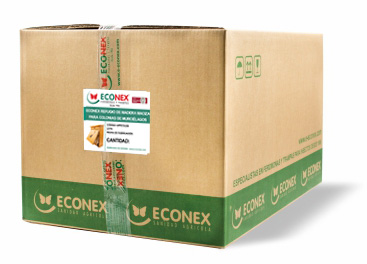
Box with 6 units.
ECONEX SOLID WOOD NESTING BOX FOR BIRDS RAPTORS
Corrugated cardboard box with 8 units.
Box dimensions: 0,60 x 0,80 x 0,48 m (width x length x height).
Box weight: 18 kg.
Number of boxes per pallet: 8
Pallet dimensions: 0,80 x 1,20 x 2,05 m (width x length x height).
Pallet weight: 154 kg.
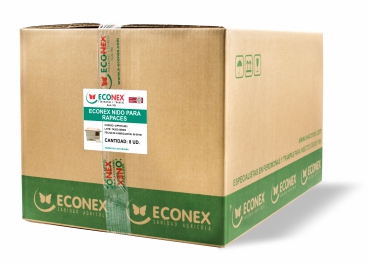
Box with 8 units.
ECONEX SHELTER BOX FOR KESTREL BIRDS
Corrugated cardboard box with 2 units.
Box dimensions: 0,40 X 0,60 X 0,35 cm (width x length x height).
Box weight: 11,50 kg.
Number of boxes per pallet: 20
Pallet dimensions: 0,80 X 1,30 X 1,95 m (width x length x height).
Pallet weight: 240 kg.
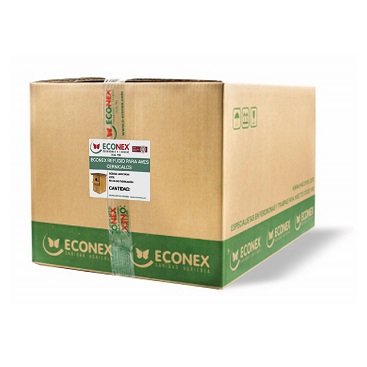
Box with 2 units.
ECONEX SHELTER BOX FOR BARN OWLS
Corrugated cardboard box with 1 units.
Box dimensions: 0,40 X 0,60 X 0,35 cm (width x length x height).
Box weight: 10,50 kg.
Number of boxes per pallet: 20
Pallet dimensions: 0,80 X 1,20 X 1,95 m (width x length x height).
Pallet weight: 220 kg.
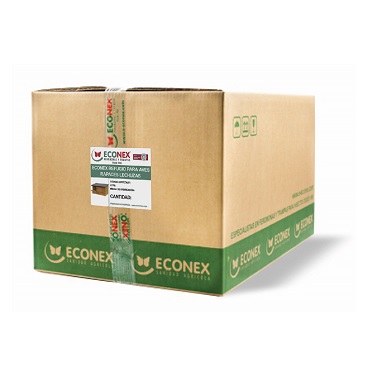
Box with 1 units.
ECONEX SHELTER BOX FOR THE WESTERN HOUSE MARTIN
Corrugated cardboard box with 10 units.
Box dimensions: 0,40 X 0,60 X 0,35 cm (width x length x height).
Box weight: 15,50 kg.
Number of boxes per pallet: 20
Pallet dimensions: 0,80 X 1,20 X 1,95 m (width x length x height).
Pallet weight: 320 kg.
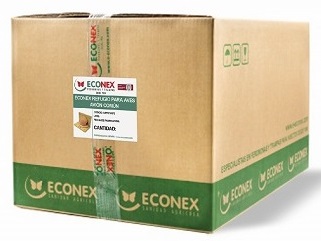
Box with 10 units.
ECONEX SHELTER BOX FOR INSECTS
Corrugated cardboard box with 3 units.
Box dimensions: 0,60 x 0,40 x 0,35 m (width x length x height).
Box weight: 17 kg.
Number of boxes per pallet: 20
Pallet dimensions: 0,80 x 1,20 x 1,95 m (width x length x height).
Pallet weight: 350 kg.
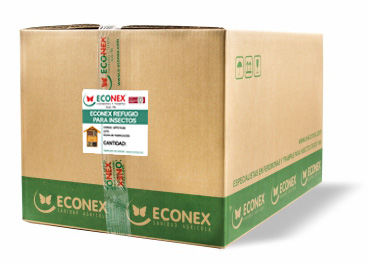
Box with 3 units.
ECONEX MEDIUM-SIZED SHELTER BOX FOR INSECTS
Shelter weight: 30 kg
Box dimensions: 80 x 60 x 48 cm (width x length x height)
Pallet dimensions: 0,80 x 1,20 x 1,95 m (width x length x height).
ECONEX GIANT SHELTER FOR INSECTS
Pallet dimensions: 0,80 x 1,20 x 0,30 m (width x length x height)
Pallet weight: 220 kg.
ECONEX SHELTER FOR HEDGEHOGS
Corrugated cardboard box with 2 units
Box dimensions: 0,60 x 0,80 x 0,48 m (width x length x height)
Box weight: 23 kg.
Number of boxes per pallet: 20
Pallet dimensions: 0,80 x 1,20 x 2,05 m (width x length x height)
Pallet weight: 469 kg
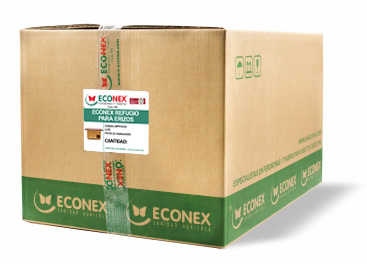
Box with 2 units.
ECONEX SHELTER FOR LIZARDS
Corrugated cardboard box with 1 units
Box dimensions: 0,40 X 0,60 X 0,35 cm (width x length x height)
Box weight: 22 kg.
Number of boxes per pallet: 20
Pallet dimensions: 0,80 X 1,20 X 1,95 m (width x length x height)
Pallet weight: 450 kg
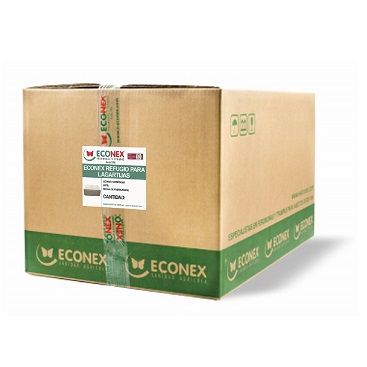
Box with 1 units.
ECONEX WOODEN BIRD FEEDER
Corrugated cardboard box with 3 units.
Box dimensions: 0,40 x 0,60 x 0,35 m (width x length x height)
Box weight: 7 kg.
Number of boxes per pallet: 20
Pallet dimensions: 0,80 x 1,20 x 2 m (width x length x height)
Pallet weight: 149 kg

Box with 3 units.
ECONEX CATALOGUE OF PRODUCTS AND SERVICES FOR FOREST PESTS
Catalogue in PDF format with a length of 102 pages. It is an essential reference work for learning about the biological behaviour of the main populations of forest insects and the ECONEX solutions for providing an effective response to the problems generated by these through the use of traps, attractants and auxiliary products.
You can download the catalogue by clicking on the image.
BIOCONTROL OF INSECTS WITH BATS MANUAL
Manual in PDF format that can be downloaded by clicking on the image.
LEAFLET NESTING BOXES AND SHELTERS
Leaflet in PDF format that can be downloaded by clicking on the image.
ECONEX LEAFLET GREEN AREAS
Leaflet in PDF format that can be downloaded by clicking on the image.
www.nestseconex.com
Specific website dedicated to ECONEX solutions for green areas which you can access by clicking on the image.
ECONEX KNOWLEDGE CENTRE
ECONEX offers the first knowledge centre that brings together everything you need to implement biocontrol of pests in your crops. We have developed different types of resources to share the knowledge we have acquired for our more than 38 years of experience. Each one is designed to respond, in the best possible way, to different questions related to pheromones, attractants, repellents and insect traps.
To access the ECONEX KNOWLEDGE CENTRE, click on the image.
SANIDAD AGRÍCOLA ECONEX, S.L. only guarantees the composition, formulation and content of the products, taking responsibility for the direct, immediate and exclusive damages caused in the composition, formulation and content of the products sold. SANIDAD AGRÍCOLA ECONEX, S.L. will not be held responsible for damages produced by factors beyond the company’s control that have either totally or partially contributed. For instance, the weather conditions, usage or mixing with other products, amongst others. In addition, SANIDAD AGRÍCOLA ECONEX, S.L. will provide recommendations and information supported by extensive and meticulous research and tests; which must be taken into account by the customer when using the products. The customer will be responsible for any damage caused, in whole or in part, for the total or partial non-observance of the instructions provided. Furthermore, the customer will be responsible for all that is referred to as the performance of the products; which comes from total or partial non-observance of the instructions and information provided by the company.